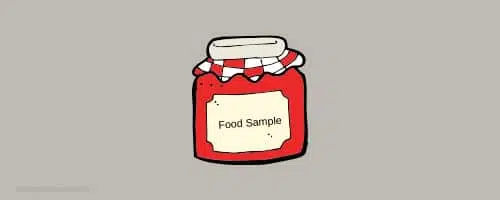A food traceability activity is testing that your product can be traced to the customer (one-up). It also involves tracing raw materials back to the supplier (one-down). So why does it matter? Like any potential crisis that can occur in your food business, the more prepared you are – the better the outcome will be. Time is of the essence when it comes to recalling a food product. Regularly completing an effective food traceability activity will help your business to ensure that product can be traced correctly in minimal time.
Food traceability activity V a mock product recall?
Before we get into the “how-to” of the food traceability activity, I want to touch briefly on the relationship with a mock recall. Many people get confused with what is expected to be undertaken when performing a food traceability activity and a mock recall. First and foremost, it is important to understand what the difference is between the two activities.
In the context of food certification, a mock recall involves testing all procedures that relate to recalling your food product from the marketplace. This includes all components of your recall plan including getting the recall team together, making the decision to recall, notifying the relevant authorities and stakeholders, drafting written communications, informing customers, retrieving affected product, allocating relevant compensation and performing finished product and raw material traceability.
The main purpose of product recall is to identify and remove affected product from the market place as quickly as possible. A traceability will allow you to work out what types, batch’s, products have been affected. Completing a mass balance will allow you to account for all quantities. The food traceability activity is therefore, just one of the components of testing your food product recall plan or undertaking a mock recall. Adequate traceability, in this aspect, is to know where your product went to and where it came from.
Three part food traceability system
The food traceability activity can be broken down into three (3) parts. Part 1 and 2 make up your backward traceability and part 3 makes up your forward food tracebility.
- Raw materials
- Work in progress
- Finished product
Starting off with Part 1, you need to know your formulation or recipe. Look at all of the raw materials that are used in this recipe and see if you are keeping records of those raw materials. Do you know what raw material batch or date code was used in your product? Key information required for raw materials can include name of supplier, the date the raw material came into your business and some type of batch code of the raw material used.
Work in progress traceability
Part 2 of this process is understanding what happens from the raw material phase to the finished product phase. This is considered to be work-in-progress. This is where you track what happens to and where your raw materials go to. Don’t forget to consider any rework and wastage. Storage of bulk finished product comes under this part along with any finished product that has been returned by a customer. The types of information you should know include things like:
- Number of units manufactured
- Any write-offs or stock waste that occurred for the finished product
- Wastage / off-cuts during the manufacturing process
- Raw material quantities used to make the product
- Quantity of rework
Customer traceability
The final phase or part 3, is to trace the finished food product from when it leaves your food business to when it gets to your customer. This seems to be the easiest part for most food manufacturers because generally ordering and dispatch systems are in place. For your food traceability activity you would need to know:
- Customer contact details
- Number of units sent to the customer
- What batch codes or dated product was sent to the customer
- Has the customer made any complaints about the product or been provided any sale credits
Map your product traceability
One of the easiest ways to show the relationships between all of your food traceability activity documents and records is to map them. This gives you a ‘high-level helicopter view’ showing how all of the data links together. This map can then also be your quick reference point when you have to quickly gather food traceability information.
If you are interested in learning more on how to complete traceability within your food business or how to map your product traceability, let me know by clicking here. If you have got your traceability method down pat, share with others and leave a comment below.



Hi, does packaging touching food product (i.e. reclosable pouch) have a lot code for traceability?
It depends on the legal requirements in your country of manufacture and country of sale. As a general rule, it would need to contain some type of traceability code.
for backward traceability, have suppliers’ and customers’ contact information ready and up to date.
Create a traceability or recall team, train the team members for how to track the products including which information or documents are required and how to retrieve them either from paper files or computerized system.
Thanks for providing your insights Pinky